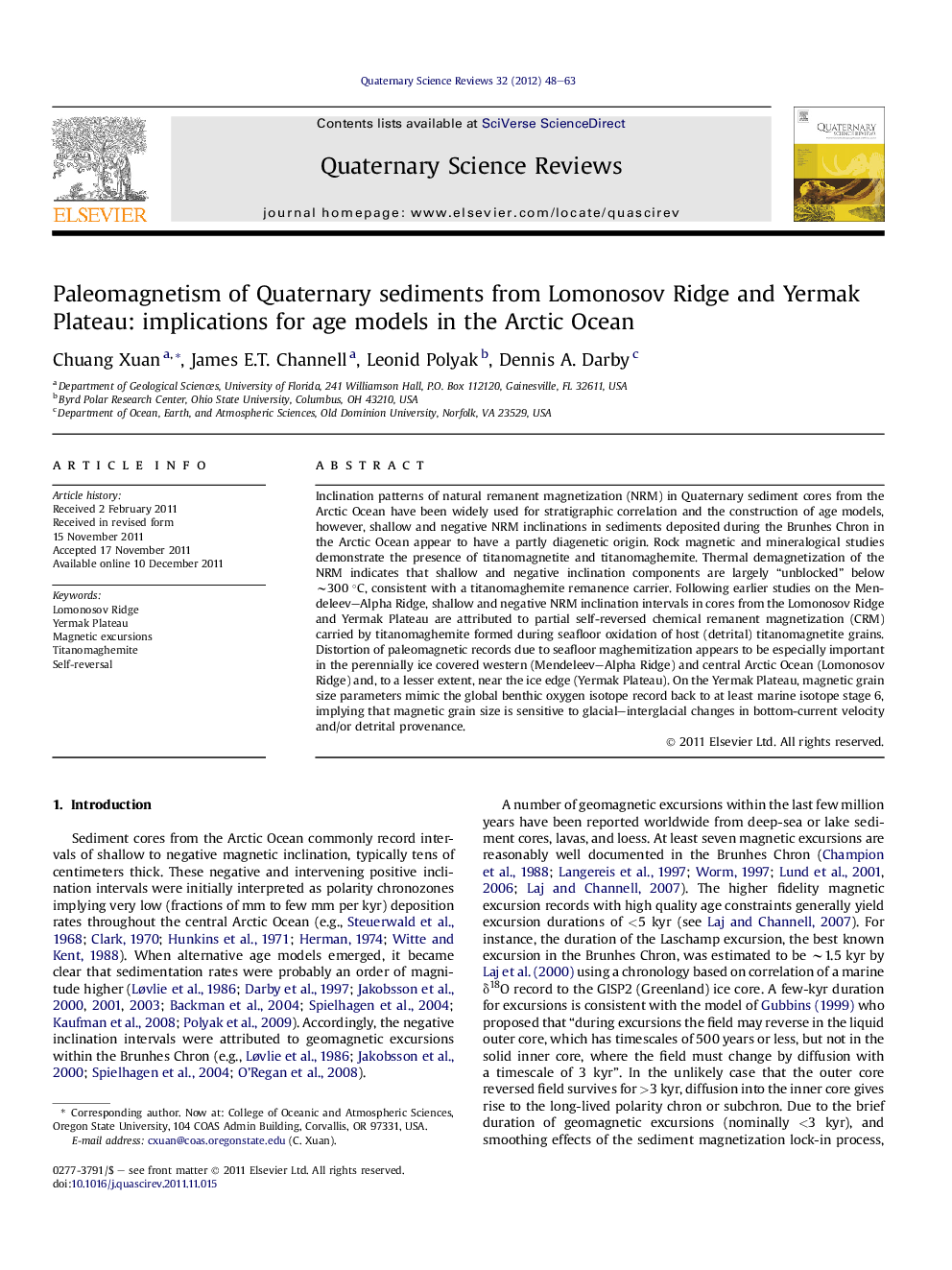| Article ID | Journal | Published Year | Pages | File Type |
|---|---|---|---|---|
| 4737609 | Quaternary Science Reviews | 2012 | 16 Pages |
Inclination patterns of natural remanent magnetization (NRM) in Quaternary sediment cores from the Arctic Ocean have been widely used for stratigraphic correlation and the construction of age models, however, shallow and negative NRM inclinations in sediments deposited during the Brunhes Chron in the Arctic Ocean appear to have a partly diagenetic origin. Rock magnetic and mineralogical studies demonstrate the presence of titanomagnetite and titanomaghemite. Thermal demagnetization of the NRM indicates that shallow and negative inclination components are largely “unblocked” below ∼300 °C, consistent with a titanomaghemite remanence carrier. Following earlier studies on the Mendeleev–Alpha Ridge, shallow and negative NRM inclination intervals in cores from the Lomonosov Ridge and Yermak Plateau are attributed to partial self-reversed chemical remanent magnetization (CRM) carried by titanomaghemite formed during seafloor oxidation of host (detrital) titanomagnetite grains. Distortion of paleomagnetic records due to seafloor maghemitization appears to be especially important in the perennially ice covered western (Mendeleev–Alpha Ridge) and central Arctic Ocean (Lomonosov Ridge) and, to a lesser extent, near the ice edge (Yermak Plateau). On the Yermak Plateau, magnetic grain size parameters mimic the global benthic oxygen isotope record back to at least marine isotope stage 6, implying that magnetic grain size is sensitive to glacial–interglacial changes in bottom-current velocity and/or detrital provenance.
► Titanomagnetite and titanomaghemite present in the studied Arctic cores. ► The Yermak Plateau core contains less titanomaghemite than the Lomonosov Ridge core. ► Titanomaghemite carries partially self-reversed CRM, causing abnormal inclinations. ► Distortion of paleomagnetic records is common in the Arctic, less near the ice edge. ► On Yermak Plateau, magnetic grain size is sensitive to glacial–interglacial changes.
